Peace Body Movement
Greenville, SC
https://www.facebook.com/peacebodymovement
Personal Trainer in Boxing and Assisting Instructor, Vince Seabrook embarked on martial arts at the age of 9… Grew up with family martial art instructors… Immediately started competing in Karate tournaments and competitions. After receiving his black belt, then he understudied various other martial arts. Boxing was Vince’s favorite of them all leading up to becoming a certified USA Boxing coach, and K1 (Kickboxing) coach. He is the owner of Peace Body (Combat) Movement. Vince currently trains in Muay Thai and Kali Weaponry. On the side, Vince is also a drummer and piano teacher for kids (Peace Body Music).
USA Amateur Boxing
What began as combat between Greek and Roman empires somewhere in the neighborhood of 4000 BC has evolved into one of the most popular sports in the history of modern sport, practiced in nearly every country throughout the world. Records allude to pugilistic games and festivals very brutal in nature as combatants fought often to their death, aided by the brutal use of metal studs and spikes. Today, boxing, particularly Olympic-style boxing, is no longer brutal in nature as the sport adheres itself to the strictest of safety constraints, where utmost attention is paid to the safety of the boxer. Amateur boxing now uses gloves without spikes and contests are determined by the use of judges, rather than by death.
Yet, for all its changes, boxing is relatively unchanged in one satisfying way: it is still hand-to-hand, one-on-one combat, pitting a boxer against someone of relative strength and size both of whom are left to battle for the prize and glory of a nation. Both are skilled in pugilistic technique and the boxer who can combat the other’s defenses and offenses shall in turn be declared the winner-as simple and pure as it was in 4000 BC.
Since becoming an organized sport in 1888, Olympic-style or amateur boxing has enjoyed a rich tradition of excellence in the United States. The sport has provided competitive opportunities for hundreds and thousands of young men and now young women. When Olympic-style boxing was organized as one of the first sports in the Amateur Athletic Union (AAU), the sport’s popularity was mainly limited to the United States. In the early years, amateur boxing’s rules were based primarily on professional boxing’s regulations.
The popularity of Olympic-style’s boxing has spread worldwide since that time and has developed its own identity and rules independent of pro boxing. The sport first gained Olympic inclusion in 1904 and since that time, United States boxers have won 111 Olympic medals: 49 gold, 23 silver and 39 bronze, which leads the all-time medal count.
The International Amateur Boxing Association was formed in 1946, creating an international body for amateur boxing. Throughout the sport’s development process, the United States has been a world leader among nations in creating competitive opportunities, enhancing the sport’s image and making amateur boxing safer for all of its participants.
Females are now a large part of USA Boxing and the sport worldwide and can compete in sanctioned amateur competition within the United States and internationally. Currently, approximately 3,000 female boxers register with USA Boxing each year. Rules regarding women’s boxing are similar to the men’s program with a few minor differences including: the optional use of breast protectors and groin protectors, and a required waiver stating that the participant is not pregnant at the time of competition, and a difference in the number and time of rounds.
Women’s boxing started in October 1993 with its first recorded victory. Acting on a lawsuit filed by Dallas Malloy, a 16-year-old female from Bellingham, Wash., USA Boxing officially lifted its ban on women’s boxing in October of 1993. The first women’s bout took place later that month as Malloy outpointed Heather Poyner in Lynnwood, Wash.
Following an IOC decision in August of 2009, women’s boxing made its Olympic debut in 2012, with three weight divisions – flyweight (112 lbs), lightweight (132 lbs), and middleweight (165 lbs) being contested. Twelve boxers in each of the three Olympic weight divisions earned berths in the 2012 Olympic Games with the 2012 Women’s World Championships in May of 2012 serving as the sole international qualifier for the event. Team USA won two medals in the debut of the sport with 17-year-old phenom Claressa Shields taking the first-ever gold medal in the women’s middleweight division and flyweight Marlen Esparza claiming bronze. Both of the United States’ medal winners and fellow 2012 Olympian Queen Underwood are back for another run at Olympic glory in 2016.
The decision to remove headgear in Elite Men’s action came down in 2013 and athletes in that competitive division began competing without headgear at the 2013 USA Boxing National Championships. The decision was announced following an AIBA study, which found that there are less concussions in elite men’s competition without headgear. http://www.teamusa.org/USA-Boxing
